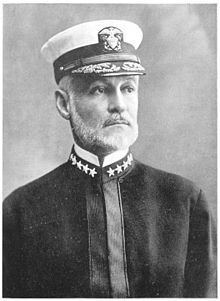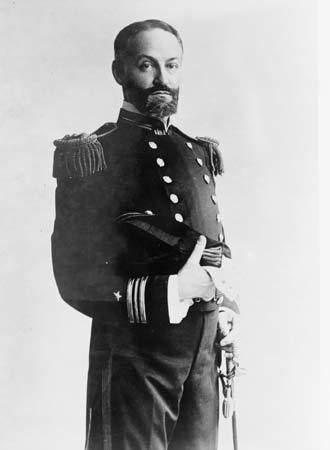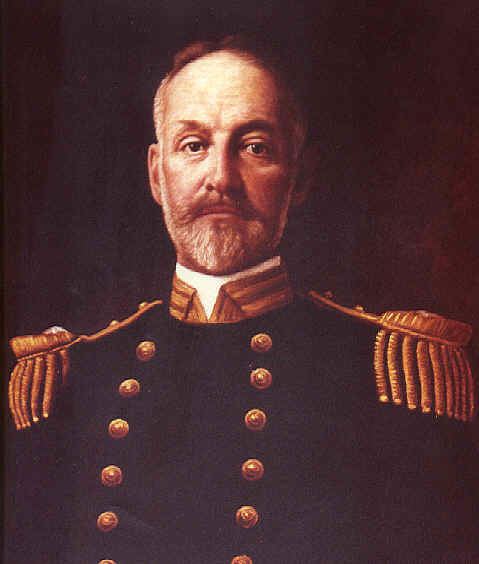Birth name William Sowden Sims Name William Sims Rank Admiral | Years of service 1880 – 1922 | |
 | ||
Born October 15, 1858Port Hope, Ontario, Canada ( 1858-10-15 ) Allegiance United States of America Commands held Naval War CollegeU.S. Naval Forces Operating in European Waters (WWI) Books The Victory at Sea, 21st Century Sims: Innovation, Education, and Leadership for the Modern Era Similar People Burton J Hendrick, Franz von Hipper, Reinhard Scheer, Arthur W Radford | ||
William Sowden Sims (October 15, 1858 – September 25, 1936) was an admiral in the United States Navy who fought during the late 19th and early 20th centuries to modernize the navy. During World War I he commanded all United States naval forces operating in Europe. He also served twice as president of the Naval War College.
Contents
- Hate crime murder black musician william sims beaten robbed and shot by 3 white thugs tomonews
- Career
- Gunnery
- First World War
- Attack on Daniels
- Retirement and death
- Honors
- Awards
- Dates of rank
- References

Hate crime murder black musician william sims beaten robbed and shot by 3 white thugs tomonews
Career

Sims was born to American parents living in Port Hope, Ontario, Canada. He graduated from the United States Naval Academy in 1880, the beginnings of an era of naval reform and greater professionalization. Commodore Stephen B. Luce founded the Naval War College in Newport, Rhode Island in 1884, to be the service's professional school. During the same era, Naval War College instructor Captain Alfred Thayer Mahan was writing influential books on naval strategy and sea power.

In March 1897, shortly after his promotion to lieutenant, Sims was assigned as the military attache to Paris and St. Petersburg. In this position he became aware of naval technology developments in Europe as well attaining familiarity with European politics which would greatly assist him during World War I. He was in this assignment during the Spanish–American War during which Sims was able to use his diplomatic connections to gain information on Spain and its high-ranking officials.
Gunnery

As a young officer, Sims sought to reform naval gunnery by improving target practice. His superiors resisted his suggestions, failing to see the necessity. He was also hindered by his low rank. In 1902, Sims wrote directly to President Theodore Roosevelt. The president, who had previously served as Assistant Secretary of the Navy, was intrigued by Sims' ideas and made him the Navy's Inspector of Naval Gunnery on November 5, 1902, shortly after which Sims was promoted to lieutenant commander. He was promoted to commander in 1907.
From 1911 to 1912, Sims attended the Naval War College. Promoted to captain in 1911, he became Commander, Atlantic Destroyer Flotilla in July 1913.
On March 11, 1916, Sims became the first captain of the battleship USS Nevada. Nevada was the largest, most modern and most powerful ship in the U.S. Navy at that time. Sims' selection as her captain shows the esteem in which Sims' was held in the Navy.
First World War
Shortly before the United States entered World War I, then Rear Admiral Sims was assigned as the president of the Naval War College in Newport, Rhode Island in February 1917. Just before the U.S. entered the war, the Wilson administration sent him to London as the senior naval representative. After the U.S. entry in April 1917, Sims was given command over U.S. naval forces operating from Britain. He received a temporary promotion to vice admiral in May 1917.
The major threat he faced was a highly effective German submarine campaign against freighters bringing vital food and munitions to the Allies. The combined Anglo-American naval war against U-boats in the western approaches to the British Isles in 1917-18 was a success due to ability of Sims to work smoothly with his British counterpart, Admiral Sir Lewis Bayly.
Sims believed the Navy Department in Washington, which was effectively headed by Assistant Secretary Franklin D. Roosevelt, was failing to provide him with sufficient authority, information, autonomy, manpower, and naval forces.
He ended the war as a vice admiral, in command of all U.S. naval forces operating in Europe. Shortly after the Armistice, Sims was promoted to temporary admiral in December 1918 but reverted to his permanent rank of rear admiral in April 1919 when he was assigned as president of the Naval War College.
Attack on Daniels
In 1919 after the war ended in Allied victory, Sims publicly attacked the deficiencies of American naval strategy, tactics, policy, and administration. He charged the failures had cost the Allies 2,500,000 tons of supplies, thereby prolonging the war by six months. He estimated the delay had raised the cost of the war to the Allies by $15 billion, and that it led to the unnecessary loss of 500,000 lives. Secretary of the Navy Josephus Daniels was more of a politician than a naval strategist, but he ably countered the accusations. He pointed to Sims' anglophilism and said his vantage point in London was too narrow to assess accurately the overall war effort by the U.S. Navy. Daniels cited prewar naval preparations and strategy proposals made by other American leaders during the war to disprove Sims' charges.
Despite the public acrimony, Sims emerged with his reputation unharmed and served a second tour as president of the Naval War College (1919–1922). It was during his time as the Naval War College that he wrote and published his book The Victory at Sea which describes his experiences in World War I. In 1921 The Victory at Sea won the Pulitzer Prize for History. Sims is, possibly, the only career naval officer to win a Pulitzer Prize. (Rear Admiral Samuel E. Morison won two Pulitzer Prizes but only served nine years in the Naval Reserve.)
Retirement and death
Sims retired from the Navy in October 1922, having reached the mandatory retirement age of 64. In retirement he lived a 73 Catherine Street in Newport, Rhode Island. He appeared on the cover of the October 26, 1925 issue of Time magazine and was the subject of a feature article. He was promoted to full admiral on the retired list in 1930.
Admiral Sims died in Boston, Massachusetts, in 1936 at the age of 77. He is buried in Arlington National Cemetery.
Honors
His account of the U.S. naval effort during World War I, The Victory at Sea, won the 1921 Pulitzer Prize for History. In 1929 Sims received an LL.D. from Bates College.
Columbia University conferred the honorary degree of doctor of laws upon Rear Admiral Sims on 2 June 1920. Several weeks later, Williams College conferred on him the honorary degree of doctor of laws during its June 21, 1920, commencement exercises.
Several U.S. Navy vessels have been named for Sims. Three ships have been named USS Sims, while a transport vessel was named USS Admiral W. S. Sims.
The United States Postal Service issued a commemorative stamp panel on February 4, 2010. One of the stamps depicted Admiral Sims.
In 1947, the Naval War College acquired an existing barracks building and converted it to a secondary war gaming facility, naming it Sims Hall after former War College President.
Awards
Military:
Civilian:
